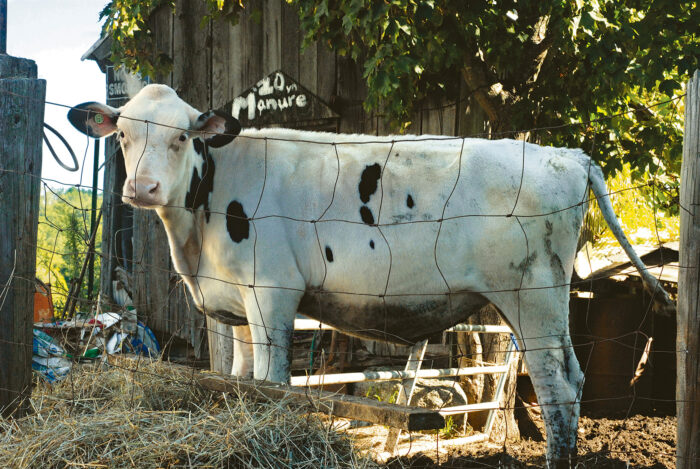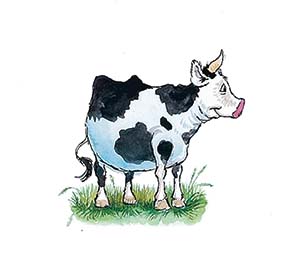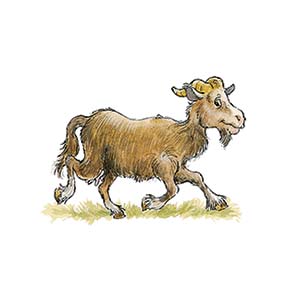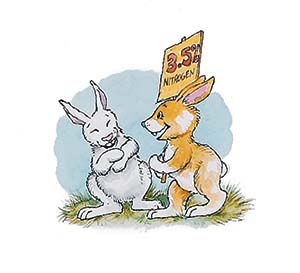Learn How to Use Manure for a Healthier Garden
Find out what kind to use, when to apply it, and why they call it gardener’s gold

I first became acquainted with the wonders of manure when my wife and I bought a small farm years ago. Not long after we moved in, we purchased a horse—and all that goes with owning a horse. Mucking out stalls was a job I put off as long as I could, until I planted our first garden. I spent the winter dumping loads of manure into the garden. By spring, I had covered the entire garden with several inches of manure. By fall, I realized just how potent the stuff was when I begged neighbors to please come down and pick some of the beans before they took over the stable. That was 10 years ago, and ever since, I have been experimenting with different types of manure, otherwise known as “gardener’s gold.”
Manure consists of three basic elements critical to plant health: nitrogen, phosphorus, and potassium. Nitrogen (N) allows plants to build living tissue for green stems, strong roots, and lots of leaves. Phosphorus (P) helps move energy through the plant, which is especially important in maturing plants. Potassium (K) aids plants in adapting sugars needed for growth and is particularly helpful in root crops. Together these three elements form that magic formula, N-P-K, the backbone of all fertilizers, manmade or organic.
Manure also contains large amounts of humus, a wonderful soil amendment. Humus is simply the bulky, fibrous material that comes from plant fibers and animal remains and is valuable in several ways: It gives better tilth to clay soils; supplies food for flora and fauna; preserves moisture during dry spells while assuring good drainage during wet times; and is a storehouse for nitrogen in the soil. In short, humus allows nutrients to work.
The quality of manure will vary from farm to farm and from time to time, depending upon the amount and type of bedding collected with it. Testing manure may be the only way to determine what its nutrient content is. So keep in mind that the references made here to nutrient levels in different kinds of manure serve as only general guidelines.
Let it mellow in your compost pile
Commercially packaged manure comes composted, but if you collect fresh manure, you’ll need to do some composting before applying it to your plants. The length of time depends on the type of manure and the season.
Add the manure slowly to the compost pile over several days or weeks, allowing plenty of air to circulate in the compost bin. Add other organic matter, like grass clippings and leaves, to break up the manure and speed curing. Turn the compost regularly as you add more manure. Stop adding the manure two months before you plan to use it in the garden. You’ll know the manure is well composted when it produces no heat and loses most of its objectionable odor when dry.
While it’s all right to add manure directly to garden soil in fall (farmers do it all the time), I’ve found that cow, horse, and bird manure are best if composted first. Sheep, goat, and rabbit manure, however, can be spread directly. Broadcast the pellets evenly, and work them 1 to 2 inches into the soil. Then add another layer of soil. This keeps the manure distributed, an important step in curing manure because it creates a larger surface area and combines the manure with the existing soil. It also allows for easy decomposition over the fall and winter months.
Find your own reputable source
With a little reading and a few phone calls, you can probably locate a hot spot for manure. Speaking as a part-time farmer who is always behind on his chores, I would never turn down volunteers to come clean my stalls. With this in mind, farms are the most logical place to begin. Look in the classified sections of local newspapers; once you locate someone in your area selling livestock, call and volunteer to clean out stalls.
If you’re interested in sheep or goat manure, however, try the extension agency in your county. You will probably find that there are folks within an hour’s drive of your house who raise these animals. Remember—with goats or sheep, you get double the nutrients in half the manure and with a third of the work.
Rabbits present a different problem. Call your local pet store, and ask what the store does with all its manure. Someone at the store will probably be more than happy for you to come by and pick up the manure after it’s already been scraped up.
Pigeons, too, are not as rare as some might think. Call your local extension agent or even the chamber of commerce (our pigeon club is mentioned in the city’s listings under “Clubs”) and ask if anyone knows of people who raise pigeons.
With the emphasis these days on recycling and chemical-free gardening, manure is a perfect answer for many people. With a phone call or two plus a few hours of work, you can provide your soil with natural, organic nutrients that enrich your garden at little or no cost.
The scoop on poop
Horses and cows: Because cows and horses are grazers, most of what they consume is roughage, like grass or hay. This manure produces a bulky, humus-rich material but one with relatively low levels of the three essential elements (N-P-K). Be sure to cure cow manure by giving it plenty of time in your compost pile. Although horse manure breaks down faster than cow manure, it still should be well composted.
Sheep and goats: Sheep and goats produce better manure than cows and horses. They produce neater, pelletized droppings, which are easily gathered and distributed. These manures quickly compost and are virtually odorless if gathered in cool weather. I even put small amounts of the manure directly into my garden in spring. It breaks down quickly, so it doesn’t hurt young plants that go out a few weeks later.
Rabbits: Resembling the droppings of goats and sheep—only smaller—rabbit manure looks like it was made for gardeners. But the big bonus from bunnies comes in its nutrient level, which is pretty high in nitrogen. The other elements are also slightly higher than in manure from goats and sheep. Rabbits, like all herbivores, eat a tremendous amount of food for their size, but that might only mean 100 pounds of feed a year; expect less than that weight to be returned as manure. But because it is twice as nutritious as other manures, you will get more for your money.
Birds: Of all the animals on my farm, birds produce the most valuable manure of all. Pigeon guano, for instance, has been prized in Europe as a supermanure since the Middle Ages. Pigeon manure rates higher in nutrient content than other fowl manures; however, it is harder to find and gather, and is best if composted thoroughly before using.
—When Roy McGinnis isn’t tending his animals and garden, he teaches high school in Mars Hill, North Carolina.
Fine Gardening Recommended Products

A.M. Leonard Deluxe Soil Knife & Leather Sheath Combo
Fine Gardening receives a commission for items purchased through links on this site, including Amazon Associates and other affiliate advertising programs.










Comments
Log in or create an account to post a comment.
Sign up Log in